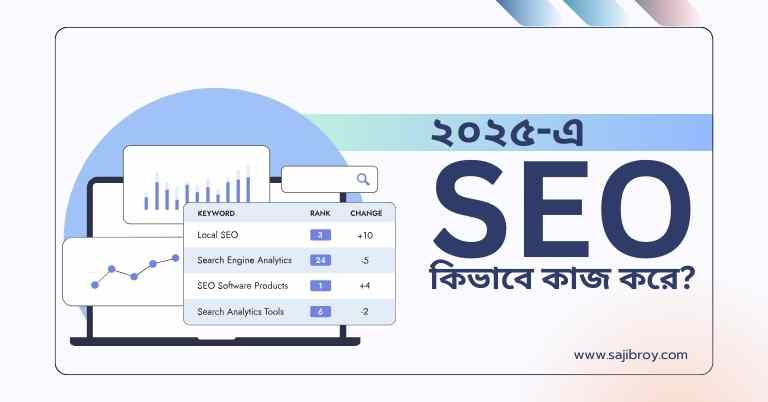Using too many keywords can be counterproductive for SEO. Stick to a small number of relevant and targeted keywords to optimize your website effectively.
Keywords play a crucial role in search engine optimization (SEO), helping your website rank higher in search engine results. However, using too many keywords can actually harm your SEO efforts. It is important to strike a balance and focus on a few relevant, high-intent keywords that accurately represent your content or products.
By doing so, you can optimize your website effectively and improve its visibility to potential visitors. Remember, quality and relevance are key when it comes to keyword usage for SEO.
Let's See the Topic Overview
The Impact Of Keyword Density
Exploring The Concept Of Keyword Density

When it comes to optimizing your website for search engines, understanding the concept of keyword density is crucial. Keyword density refers to the number of times a specific keyword appears on a webpage in relation to the total number of words.
It is an important factor that search engines consider when determining the relevance of a page to a particular search query. Let’s explore the impact of keyword density on SEO and how to find the right balance for keyword usage.
Finding The Right Balance For Keyword Usage
Finding the right balance between using enough keywords to optimize your content for search engines and avoiding keyword stuffing can be challenging. Here are some key points to consider:
- Focus on quality content: While keywords are important, creating high-quality, engaging content should be your top priority. Your content should be valuable and informative to readers, providing answers to their queries.
- Optimize for user intent: Instead of focusing solely on keyword density, consider the intent behind the keywords. Understand what users are searching for and create content that fulfills their needs. This approach will not only improve your rankings but also enhance the overall user experience.
- Natural integration: Keywords should be seamlessly integrated into your content. Avoid forcing keywords into sentences where they don’t fit organically. Use variations of your target keywords to ensure a more natural and flowing writing style.
- Keyword placement: Place your keywords strategically throughout your content. Ensure they appear in important areas such as titles, headings, and meta tags. However, avoid overusing them in the body of your content, as it may appear unnatural to both readers and search engines.
Debunking Misconceptions About Keyword Density
There are several misconceptions surrounding keyword density that need to be debunked. Here are some common myths explained:
- Density threshold: There is no specific keyword density percentage that guarantees better rankings. Search engines have become more sophisticated and prioritize content quality over keyword density. Therefore, it’s essential to focus on providing valuable content rather than obsessing over a specific keyword density.
- Exact match keywords: In the past, exact match keywords were heavily emphasized. However, search engines now consider semantic relevance and user intent. Aim for keyword variations and synonyms that align with the context of your content.
- Keyword stuffing penalties: Keyword stuffing, the practice of overusing keywords excessively, can lead to penalties from search engines. It is essential to maintain a natural flow and balance in your content, ensuring that keywords are used in moderation.
While keyword density remains a relevant SEO factor, it is no longer the sole indicator of a webpage’s relevance. Focus on creating high-quality, user-centric content that incorporates keywords naturally and provides value to your audience. By doing so, you’ll enhance your SEO efforts and improve your chances of ranking higher in search engine results.
Identifying Relevant Keywords
Conducting keyword research:
- Conducting thorough keyword research is essential for successful SEO strategies. It helps identify the keywords your target audience is using to search for information related to your p or industry.
- Start by brainstorming a list of potential keywords that are relevant to your website and business. These can include general keywords and more specific long-tail keywords.
- Use keyword research tools like google keyword planner, MOZ keyword explorer, or SEMrush to expand your keyword list and gather valuable data such as search volume, competition, and potential traffic.
- Look for keywords that have a good balance between search volume and competition. Avoid overly competitive keywords that are difficult to rank for or low search volume keywords that may not generate much traffic.
- Focus on keywords that are specific to your target audience and align with the products or services you offer. These keywords have a higher chance of attracting qualified traffic that is more likely to convert into customers.
- Keep in mind that keyword research is an ongoing process. Monitor the performance of your chosen keywords and be open to adapting your strategy based on search trends and changes in your industry.
Using tools to find relevant keywords:
- Utilize keyword research tools to discover a wide range of relevant keywords. These tools provide valuable insights into search volume, competition, and related keywords, helping you identify the most profitable and effective keywords for your SEO efforts.
- Google keyword planner is a popular tool that provides comprehensive data directly from Google’s search engine. It allows you to explore keyword ideas, search volume, and potential traffic estimates.
- SEMrush and MOZ keyword explorer are also powerful tools that offer extensive keyword research capabilities. These tools not only provide keyword suggestions but also analyze your competitors’ keywords, helping you gain a competitive edge.
- Additionally, there are free tools such as user suggest and answer the public that can provide valuable keyword insights.
- Remember to focus on keywords that have relevance to your website and target audience. Look for keywords that align with your content and are likely to attract the right visitors to your site.
Understanding user search intent:
- User search intent refers to the underlying motivation and purpose of a search query. Understanding user search intent is crucial for choosing the right keywords that will drive relevant traffic to your website.
- Take the time to analyze the intent behind popular keywords in your industry. Are users looking for information, making a purchase, or seeking a solution to a problem? Tailor your keyword strategy to align with these different intents.
- Consider the various types of search intent, such as informational, transactional, and navigational. Informational intent keywords typically indicate users seeking knowledge or answers to questions. Transactional intent keywords often reflect users actively looking to make a purchase. Navigational intent keywords indicate users looking for specific websites or brands.
- By aligning your keywords with user search intent, you can better meet the needs of your target audience and increase the likelihood of them finding and engaging with your content.
- Regularly analyze and refine your keyword strategy based on changes in user search behavior and industry trends. Stay up to date with the evolving needs of your target audience to maintain a competitive edge in search engine rankings.
Remember, consistently monitoring and adjusting your keyword strategy based on data and user search behavior is essential for SEO success. By conducting thorough keyword research, using effective keyword research tools, and understanding user search intent, you can optimize your website to reach the right audience and increase organic traffic.
Keyword Placement And Optimization
Optimizing keywords is a crucial aspect of SEO. It involves strategically placing keywords in various elements of your website to increase its visibility and relevance to search engines. In this section, we will explore how to optimize keywords in title tags, meta descriptions, headings, URL structures, anchor text, and body content.
So, let’s dive in and learn how to make the most of your keywords.

Optimizing Keywords In Title Tags, Meta Descriptions, And Headings
- Title tags: The title tag is a crucial element that tells search engines what your page is about. Here’s how you can optimize your keywords in title tags:
- Include the primary keyword at the beginning of the title tag.
- Keep the title tag concise and under 60 characters to ensure it doesn’t get truncated in search engine results.
- Avoid keyword stuffing and focus on creating a compelling title that attracts clicks.
- Meta descriptions: While meta descriptions don’t directly impact search engine rankings, they play a vital role in enticing users to click on your page. Consider the following when optimizing keywords in meta descriptions:
- Incorporate relevant keywords naturally, providing a preview of what users can expect from your page.
- Keep the meta description under 160 characters to ensure it doesn’t get cut off in search results.
- Craft a compelling meta description that entices searchers to click on your page.
- Headings: Heading tags (h1, h2, h3) provide structure and hierarchy to your content. Here’s how you can optimize keywords in headings:
- Use h1 tags for page titles and include primary keywords to indicate the main topic.
- Utilize h2 tags for section headings to guide users and search engines through your content.
- Incorporate relevant keywords naturally in h2 and h3 tags to enhance the semantic relevance of your content.
Incorporating Keywords In URL Structures And Anchor Text
- URL structures: Optimizing keywords in URLs helps search engines understand the context of your page. Consider the following guidelines when incorporating keywords in URL structures:
- Keep URLs concise, descriptive, and relevant to the content.
- Include primary keywords in the URL without overstuffing or making it look unnatural.
- Use hyphens to separate words for better readability.
- Anchor text: Anchor text refers to the clickable text within a hyperlink. By optimizing anchor text with keywords, you can enhance the context and relevance of linked pages. Follow these tips when incorporating keywords in anchor text:
- Use descriptive anchor text that provides clarity about the linked page’s content.
- Incorporate relevant keywords naturally within the anchor text.
- Avoid using generic phrases like “click here” or “learn more,” as they provide little context for both users and search engines.
Utilizing Keywords In Body Content
The body content is where you have the most flexibility in optimizing keywords. Here’s how you can make the most of it:
- Craft engaging and informative content that naturally incorporates keywords.
- Aim for a keyword density of around 1-2% to avoid keyword stuffing.
- Use variations of your primary keyword, including synonyms and related terms, to enhance the semantic relevance of your content.
- Structure your content with headings (h3 tags) to make it more scannable and easy to navigate for readers and search engines.
Remember, keyword optimization should always prioritize the user’s experience and provide valuable content. By integrating keywords seamlessly and naturally throughout your website, you’ll increase its visibility and relevance to search engines, ultimately driving more organic traffic.
The Role Of Synonyms And Related Terms
Diversifying keyword usage with synonyms:
- Incorporating synonyms into your content can help you capture a wider audience, as different users may use different terms to search for the same topic.
- Synonyms also prevent keyword stuffing and make your content more readable and natural.
- When selecting synonyms, remember to choose words with similar meanings and relevance to your main keyword. This ensures that your content continues to address the intended topic.
- Using an online thesaurus or keyword research tools can assist in finding appropriate synonyms for your target keyword.
Incorporating related terms for context and relevance:
- Including related terms in your content helps search engines understand the context and relevance of your topic.
- Related terms provide a holistic picture of a subject, signaling to search engines that your content covers the topic comprehensively.
- To identify related terms, consider the broader concepts and subtopics that are closely associated with your main keyword.
- Sprinkling related terms strategically throughout the content helps create a more comprehensive and authoritative piece.
Strengthening on-page optimization with semantic SEO:
- Semantic SEO focuses on the meaning and intent behind search queries, rather than solely relying on exact keyword matches.
- Search engines have become smarter at understanding user intent, so it’s essential to optimize your content by incorporating semantic signals.
- Include relevant and semantically related terms within your content to enhance its semantic relevance.
- Semantic optimization also involves using structured data markup, natural language processing, and schema markup to provide more context to search engines.
- By implementing semantic SEO techniques, you can improve your website’s visibility and relevance in search engine results.
Remember, diversifying your keyword usage with synonyms, incorporating related terms, and implementing semantic SEO are all essential strategies for optimizing your content for search engines. By doing so, you can improve your website’s visibility, attract relevant traffic, and ultimately boost your SEO efforts.
Avoiding Keyword Stuffing
When it comes to optimizing your website for search engines, using keywords strategically is crucial. However, overusing keywords can be detrimental to your SEO efforts. Keyword stuffing, the practice of excessively using keywords in an attempt to manipulate search engine rankings, is a tactic that search engines like Google strongly discourage.
Here’s why you should avoid keyword stuffing and focus on creating quality content instead:
- Understanding the risks of keyword stuffing
Keyword stuffing may have been an effective tactic in the early days of SEO, but search engines have become much smarter in their algorithms. They can now easily recognize when a website is trying to manipulate search rankings by using excessive keywords.
Here are the risks involved in keyword stuffing:
- Penalization by search engines: Search engines like Google can penalize your website for keyword stuffing, resulting in a drop in rankings or even a complete removal from search results. This can have a significant negative impact on your organic traffic and overall online visibility.
- Poor user experience: Keyword stuffing often leads to poorly written content that is difficult for users to read and understand. Your website visitors are looking for valuable and engaging content, not a bunch of repetitive keywords. By focusing on quality rather than quantity, you can provide a better user experience and keep visitors on your site for longer.
- Loss of credibility: Keyword stuffing can make your website appear spammy and untrustworthy. It undermines the credibility of your brand or business and can result in a loss of customer trust. Building a reputable online presence requires providing valuable and relevant content that aligns with the search intent of your target audience.
recognizing spammy SEO practices
Keyword stuffing is just one example of a spammy SEO practice. Here are a few other tactics that you should steer clear of:
- Hidden text: This involves hiding keywords by making them the same color as the background or placing them in tiny font sizes. Search engines can easily detect this deceptive technique and may penalize your website for it.
- Irrelevant keywords: Including keywords that are unrelated to your content in an attempt to drive traffic is considered spammy. This not only annoys users but also confuses search engines, leading to a drop in rankings.
- Link manipulation: Buying or engaging in unnatural link-building practices can land you in hot water with search engines. Instead, focus on earning high-quality backlinks naturally by creating valuable content that others want to link to.
writing for users and search engines simultaneously
While it’s important to optimize your content for search engines, it shouldn’t come at the expense of user experience. You need to strike a balance between writing for search engines and creating content that engages and resonates with your target audience.
Here are a few tips to achieve this balance:
- Do keyword research: Start by conducting keyword research to understand the search terms and phrases your target audience is using. Incorporate these keywords naturally into your content, aiming for a moderate keyword density.
- Write valuable content: Focus on creating content that provides value and answers the questions or needs of your target audience. This will help establish your expertise and keep visitors coming back for more.
- Structure your content: Use headings, subheadings, and bullet points to make your content easy to scan and understand. This also helps search engines better understand the structure and context of your content.
By avoiding keyword stuffing and focusing on quality content that appeals to both users and search engines, you can improve your website’s visibility and attract more organic traffic in a sustainable and ethical way. Remember, it’s not just about ranking high on search engine results pages, but also about delivering a great user experience.
Evaluating Keyword Performance
Measuring Keyword Effectiveness
When it comes to SEO, one of the most important aspects is keyword optimization. But how do you know if your chosen keywords are working effectively? By measuring keyword performance, you can gain valuable insights into the success of your SEO strategy.
Here are some key points to consider:
- Use google analytics: Utilize the power of analytics to track the performance of your keywords. Look for metrics such as organic traffic, bounce rate, and time spent on page to determine the impact of your keywords on user behavior.
- Track keyword rankings: Keep a close eye on the rankings of your target keywords. Tools like SEMrush and MOZ can help you monitor your keyword positions in search engine results pages (SERPs). By analyzing these rankings over time, you can identify trends and make data-driven decisions.
- Analyze click-through rates (CTRs): High rankings don’t guarantee success if users are not clicking on your links. Pay attention to the CTRs of your keywords, as this metric reflects the effectiveness of your title tags and meta descriptions. Experiment with different wording and formatting to improve your CTRs.
- Monitor conversion rates: Ultimately, the success of your SEO efforts is measured by conversions. Keep tabs on how well your keywords are driving conversions, whether it’s through newsletter sign-ups, sales, or other desired actions. Identify high-performing keywords and optimize your content to capitalize on their success.
Utilizing Analytics To Track Keyword Rankings
Analytics play a crucial role in understanding the performance of your keywords. Here’s how you can use analytics to effectively track keyword rankings:
- Set up goals and conversion tracking: Define your conversion goals, such as form submissions or purchases, and implement the necessary tracking codes. By tracking these goals, you can measure the keyword performance that leads to conversions.
- Use an SEO tool: Leverage SEO tools like google search console, AHREFS, or SEMRUSH to monitor keyword rankings. These tools provide valuable insights into keyword visibility, search volume, and competition. Regularly analyze these metrics to identify opportunities for improvement.
- Monitor keyword trends: Keyword rankings are not constant and can fluctuate over time. Stay updated with keyword trends to ensure your strategy aligns with current search patterns. Keep an eye on emerging topics, popular industry terms, and relevant news to stay ahead in the SEO game.
Adjusting Keyword Strategy Based On Performance Data
To continuously refine your keyword strategy, it’s crucial to adjust and adapt based on performance data. Here are a few steps to take based on your keyword performance metrics:
- Identify underperforming keywords: Regularly review your keyword performance data to identify keywords that are not delivering the desired results. Determine whether it’s due to high competition, low search volume, or irrelevance to your target audience. Consider replacing these keywords with more effective alternatives.
- Optimize high-performing keywords: On the other hand, if you notice certain keywords consistently driving traffic and conversions, optimize your content further for these keywords. Focus on creating more comprehensive, informative, and engaging content around these high-performing keywords.
- Explore long-tail keywords: Long-tail keywords are more specific and often have lower competition while targeting a niche audience. Analyze your performance data to identify potential long-tail keyword opportunities. Incorporate these keywords strategically into your content to attract highly relevant traffic.
- Stay updated with industry trends: SEO is an ever-evolving field, and keyword preferences change over time. Regularly research and analyze current industry trends, user behavior, and search patterns. This information will guide you in adjusting your keyword strategy to stay relevant and competitive.
By consistently evaluating your keyword performance, utilizing analytics, and making data-driven adjustments, you can optimize your SEO efforts for maximum effectiveness. Keep an eye on the changing landscape and apply a proactive approach to stay ahead in the search engine rankings.
Conclusion
Proper keyword usage is essential when it comes to SEO optimization. Now that you have a clearer understanding of how many keywords you should use, it’s time to put that knowledge into action. Remember, quality should always be prioritized over quantity.
Instead of stuffing your content with numerous keywords, focus on incorporating them naturally and strategically. By doing so, you’ll provide readers with valuable, informative content that search engines will reward. Additionally, consider using long-tail keywords to target specific audiences and boost your chances of ranking higher in search results.
Above all, remember that SEO is an ever-evolving field, so staying updated with the latest trends and best practices is crucial. As you continue to create compelling content that resonates with your audience and optimizes for search engines, you’ll see your website’s visibility and organic traffic grow.



![6-Month Local SEO Plan [Download Your Complete Proposal Template]](https://www.sajibroy.com/wp-content/uploads/2025/01/6-Month-Local-SEO-Plan-Download-Your-Complete-Proposal-Template.jpg)







